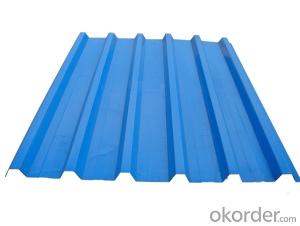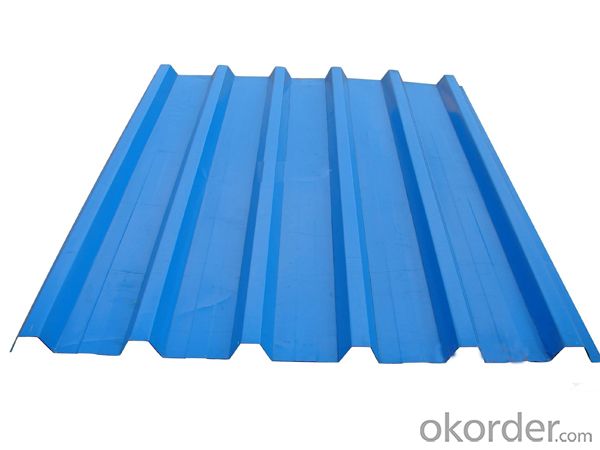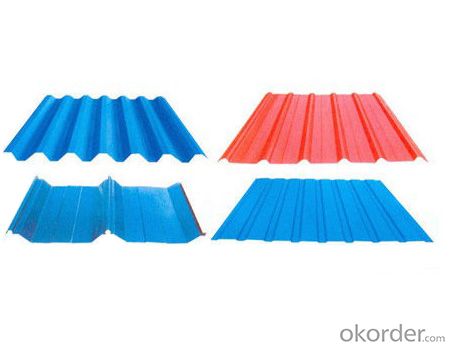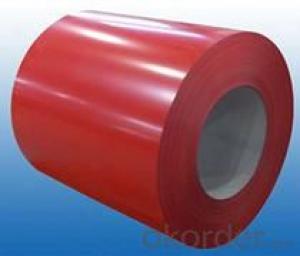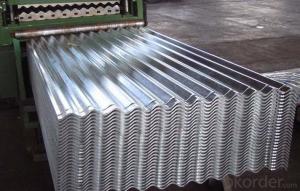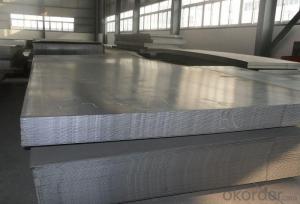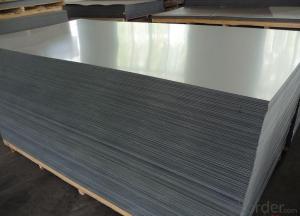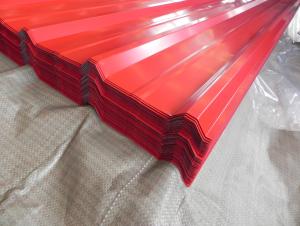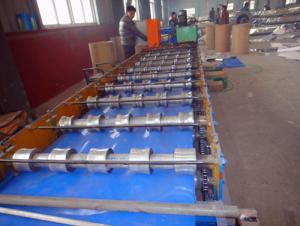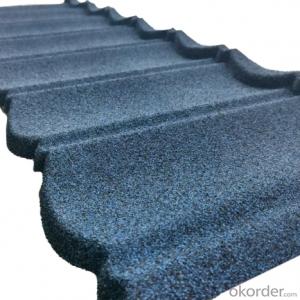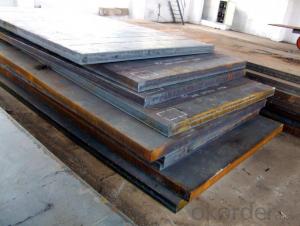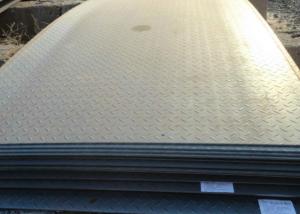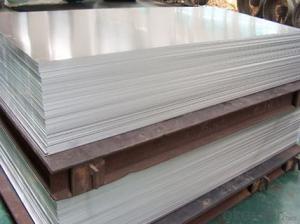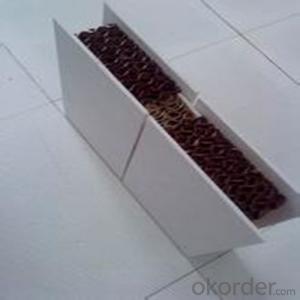Metal Roofing Galvanized Color-coated Sheet
- Loading Port:
- Guangzhou
- Payment Terms:
- TT or LC
- Min Order Qty:
- 1000 m²
- Supply Capability:
- 200000 m²/month
OKorder Service Pledge
OKorder Financial Service
You Might Also Like
Introduction
A metal roof is a roofing system made from metal piece, or tiles. It is a component of the building envelope.Metal roofs protect buildings.
Specifications
metal roofing galvanized color-coated sheet
1 Material:PPGI
2. Long life: 15-20 years
3.Lenth can be customized
Product Description
The Characteristics of our Color Steel Glazed Tiles
It is imitated ancient glazed tiles,with beatiful appearance, Many colors available, with elegant and noble looking.
Easy to be maintained and long life.
It is light, easy to be installed and dismentale.
It has the characteristics of fireproof and resistance of wind.
More suitable for coastal areas.
It can be recycled and good for environments.
Size
width: 840mm
thickness: 0.3-1.2mm
length: as customer’s requirement
expand width: 1000mm
appearance: Colourful,smooth, bright
surface treatment: coated
color: red, or as your requirements

- Q: Are steel sheets suitable for high-vibration environments?
- Yes, steel sheets are suitable for high-vibration environments. Steel is a strong and durable material that can withstand vibrations without experiencing significant deformation or damage. It is commonly used in industries such as construction, automotive, and aerospace, where high-vibration environments are common. Additionally, steel sheets can be designed and manufactured to have vibration-damping properties, further enhancing their suitability for such environments.
- Q: What are steel sheets?
- Steel sheets are flat metal plates made of steel that are used in various industries for applications such as construction, manufacturing, and fabrication. They are typically thin and come in different sizes and thicknesses, making them versatile for a wide range of purposes.
- Q: Are steel sheets suitable for architectural applications?
- Yes, steel sheets are definitely suitable for architectural applications. They offer excellent strength, durability, and versatility, making them ideal for a wide range of architectural projects. Steel sheets can be used for roofing, cladding, flooring, and structural elements, providing both aesthetic appeal and structural integrity. Additionally, steel sheets can be easily shaped, cut, and welded to create intricate and complex architectural designs.
- Q: Do steel sheets have any environmental benefits?
- Steel sheets possess numerous environmental advantages. Firstly, steel is an immensely recyclable material, allowing for multiple reuses without compromising its quality. This notably diminishes the necessity for new steel production, subsequently reducing the extraction of raw materials and the energy consumption associated with manufacturing. Additionally, recycling steel aids in the reduction of greenhouse gas emissions and the preservation of natural resources. Moreover, steel sheets exhibit exceptional durability and longevity. Their high resistance to corrosion means they require minimal maintenance throughout their lifespan. This durability lessens the need for frequent replacements, ultimately decreasing the demand for new steel production and its accompanying environmental impact. Furthermore, steel sheets can contribute to energy efficiency in buildings. When utilized as roofing or cladding material, they provide excellent insulation properties, effectively reducing the requirements for heating and cooling energy. Consequently, this leads to lower energy consumption and a reduced carbon footprint. Additionally, steel sheets possess fire-resistant qualities, thereby enhancing building safety and minimizing the risk of fire-related accidents. This aspect positively impacts the environment by minimizing the release of harmful emissions and pollutants resulting from fires. In conclusion, steel sheets present a range of environmental benefits, encompassing recyclability, durability, energy efficiency, and fire resistance. These attributes contribute to a more sustainable and eco-friendly approach within the construction and manufacturing industries.
- Q: What is the bending radius for steel sheets?
- The bending radius for steel sheets depends on various factors such as the thickness of the sheet, the type of steel being used, and the specific application. Generally, a common rule of thumb is to use a bending radius that is at least twice the thickness of the steel sheet. However, this value may vary depending on the specific requirements and limitations of the project. It is important to consult with engineering and fabrication professionals who have expertise in working with steel sheets to determine the appropriate bending radius for a given application.
- Q: What are the different coating options for steel sheets (powder coating, paint, etc.)?
- There are several different coating options available for steel sheets, each offering unique benefits and characteristics. Some of the most common coating options include: 1. Powder coating: Powder coating involves applying a dry powder coating material onto the steel sheet. This coating is then cured under heat to form a protective layer. Powder coating provides excellent durability, corrosion resistance, and aesthetic appeal. It is also environmentally friendly, as it does not contain solvents or VOCs. 2. Paint: Paint is one of the most traditional coating options for steel sheets. It involves applying liquid paint onto the surface, which then dries and forms a protective layer. Paint coatings offer a wide range of colors and finishes, making them suitable for various applications. However, they may require periodic maintenance and can be susceptible to chipping and peeling. 3. Galvanizing: Galvanizing is a popular coating method for steel sheets, especially in industries where corrosion resistance is crucial. It involves applying a layer of zinc onto the steel surface through a hot-dip process. This creates a protective barrier that prevents corrosion and rusting. Galvanized coatings are highly durable and long-lasting. 4. Epoxy coatings: Epoxy coatings are known for their excellent chemical resistance and adhesion properties. They provide a tough and durable finish that protects steel sheets from corrosion, chemicals, and abrasion. Epoxy coatings are commonly used in industrial settings where harsh conditions are prevalent. 5. Chromate conversion coatings: Chromate conversion coatings, also known as chemical conversion coatings, are applied to steel sheets to enhance their corrosion resistance and improve paint adhesion. These coatings are typically thin and translucent, providing a clear or slightly yellowish appearance. Chromate conversion coatings are commonly used as a pre-treatment before painting or powder coating. 6. Ceramic coatings: Ceramic coatings offer exceptional heat resistance and durability. They are often utilized in high-temperature applications, such as exhaust systems or industrial ovens. Ceramic coatings can withstand extreme temperatures, corrosion, and abrasion, making them ideal for demanding environments. These are just a few of the coating options available for steel sheets. The choice of coating will depend on factors such as the intended application, desired appearance, environmental conditions, and budget. Consulting with a coating specialist or manufacturer can help determine the most suitable coating option for specific requirements.
- Q: Are steel sheets recyclable?
- Yes, steel sheets are highly recyclable. Steel is one of the most recycled materials in the world, and steel sheets can be easily recycled and repurposed into new steel products, reducing the need for raw materials and saving energy.
- Q: What are the different embossing options available for steel sheets?
- There are several embossing options available for steel sheets, including blind embossing, deep embossing, pattern embossing, and textured embossing.
- Q: Can steel sheets be used for insulation?
- No, steel sheets cannot be used for insulation as they conduct heat and do not possess insulating properties.
- Q: What is the process of annealing steel sheets?
- Annealing steel sheets is a heat treatment process that involves heating the steel sheets to a specific temperature and then slowly cooling them to soften the material and relieve internal stresses. This process helps improve the steel's ductility, machinability, and overall mechanical properties.
Send your message to us
Metal Roofing Galvanized Color-coated Sheet
- Loading Port:
- Guangzhou
- Payment Terms:
- TT or LC
- Min Order Qty:
- 1000 m²
- Supply Capability:
- 200000 m²/month
OKorder Service Pledge
OKorder Financial Service
Similar products
Hot products
Hot Searches
Related keywords
